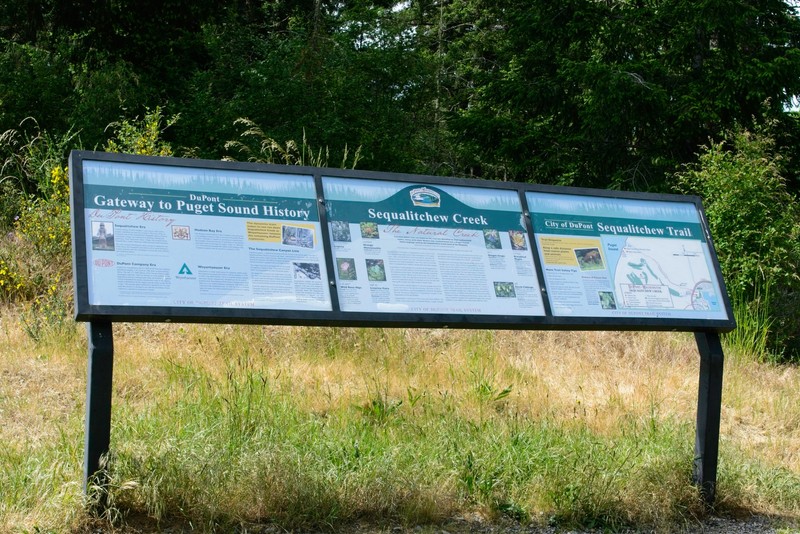People of the Sequalitchew Band
Introduction
Text-to-speech Audio
Before the arrival of the Hudson’s Bay Company, the Sequalitchew Tribe inhabited the area for thousands of years. They get their name from the Sequalitchew Creek and they built their village at the mouth of the river. The first recorded Chief was La-ha-let who earned the trust of the HBC men and served as an interpreter.
Images
People of the Sequalitchew Band interpretive sign

Backstory and Context
Text-to-speech Audio
Prior to the establishment of the Hudson’s Bay Company in 1833, the area surrounding the Sequalitchew Creek was the home of the Sequalitchew Band. One of the 13 bands of the Nisqually Tribe, the Sequalitchew lived where the creek met the Puget Sound. The name Sequalitchew is meant to describe the sandy beach at the mouth of the creek or “long run-out tide.”
The village consisted of two cedar plank longhouses and had a population of around 50 people. Located next to freshwater and above the tide line, the location of the village was well thought out. In charge of the village’s affairs was a headsman who would show bravery and wisdom in times of hardship. Their burial grounds were further north on a high cliff for protection and they practiced both ground and tree burials. In order to keep children from playing in the cemetery elders would tell them the spirits would be upset.
Their diet contained a variety of shellfish and small fish like herring and flounder. Salmon were a mainstay in the diet due to the several different types that came throughout the year. The Nisqually Prairie provided them with roots and bulbs to eat. During the summer groups would go out to hunt deer and collect berries. Ceremonies were held to give thanks for all these sources of food.
Sources
Carpenter, Cecelia Svinth. Fort Nisqually: A Documented History of Indian and British Interaction. Tahoma, WA. Tahoma Research, 1982.
DuPont Historical Society
